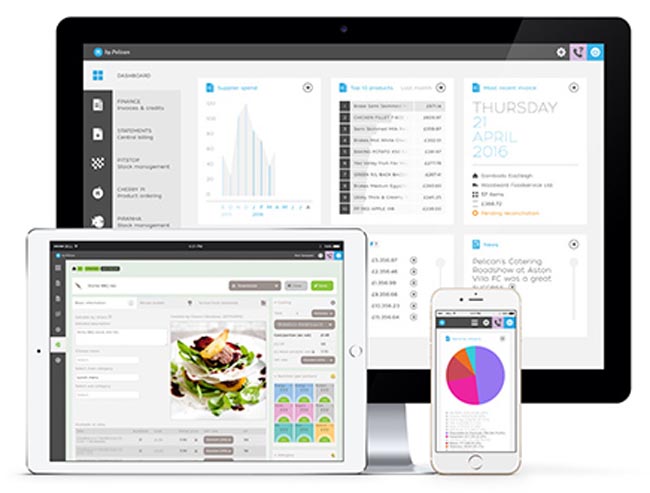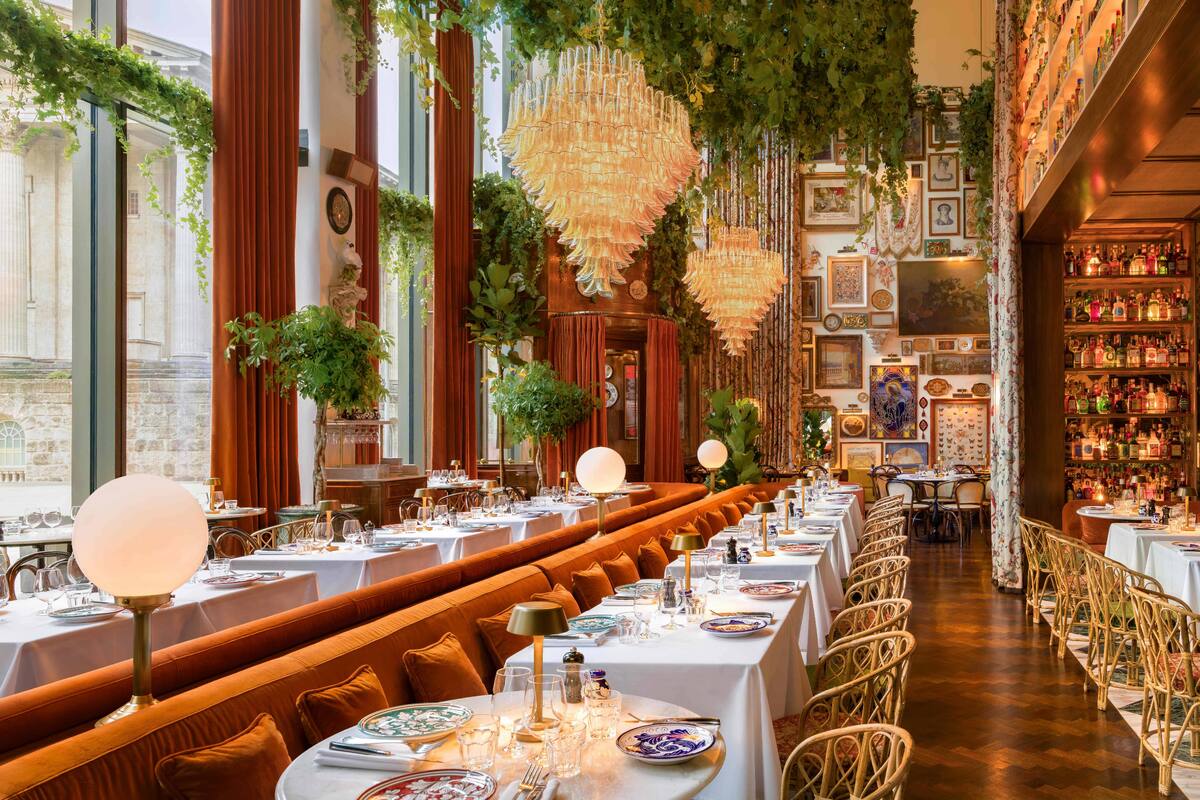Technology prospectus 2018 – Procurement services
Inflation has showed signs of easing in the final quarter of 2017, but hospitality operators remain under huge pressure to keep their costs under control. Elly Earls finds out how technology can help with everything from reducing admin time to gauging how customers feel about a business
The hospitality industry breathed a sigh of relief in September when the CGA Prestige foodservice price index showed a dip in the wholesale foodservice inflation rate to 6.5% after a 9.3% year-on-year rise in August.
While Prestige Purchasing chief executive Shaun Allen believes this is a sign of things to come, he's also advising operators not to be overly optimistic. "Prices are not typically falling at the moment," he says, "but year-on-year inflation is, as we are not currently seeing the high price rises that characterised the equivalent period of last year. Prices may ease if the exchange rate situation improves, but there is broadly a nine-month lag for that to happen.
"The drop in inflation is because we are effectively moving back to inflation caused by natural market and economic conditions, rather than being driven by unusual and sharp currency movement as we experienced following the referendum."
In terms of specific products, salmon prices have been dropping and are at their lowest for a year. Sugar prices too are very low, due in part to the removal of quotas on production. However, food oil prices are high due to disease in growing regions, particularly Spain and Italy, while dairy product prices remain very high and volatile, primarily due to a lack of supply, most notably in butter and cream.
Prestige is currently forecasting average foodservice price inflation over the next
12 months of 3.8% on food and non-alcoholic beverages. The main factors set to affect food prices over that period, according to Allen, are the Brexit negotiations and their impact on the exchange rate, the ability to utilise non-UK workers, business rates and the national minimum wage, as well as the usual supply and demand influences and weather impacts.
According to Lynx Purchasing's most recent market forecast, in a market where consumer spending is also under pressure and industry analysts are forecasting more use of targeted deals, vouchers and special offers to encourage customers to eat out, any business that doesn't have its supplier costs firmly under control will struggle to remain competitive.
Everything in one place
There are a number of key ways that technology can help caterers keep on top of their costs and make savings, and all revolve around visibility. The best procurement systems available today allow businesses to see everything that's going on over their entire operation in one place and in real time, meaning they can identify inconsistences and make adjustments extremely quickly.
For example, Pelican's Pi procurement system can offer everything from online access to supplier invoices, credits and consolidated statements relating to a site or cost centre to recipe costing with detailed allergen and nutritional data breakdown, stock management, contract compliance and graphical reports that provide real-time business intelligence.
Similarly, Fourth Analytics software brings together industry benchmarking, Epos data, smart menu design, procurement and stock control, and can be viewed on clear, mobile-friendly dashboards. "Customers can have all their KPIs on their iPhone or iPad so they don't have to go and look at endless Excel reports on different systems," explains Fourth's analytics and insight solutions director Mike Shipley.
Operators can also see their most purchased items â" generally the top 20 product lines represent 50% of a businessâs purchases â" enabling them to figure out where swapping a product for a cheaper alternative will make the biggest impact. Pelican Pi, for example, has saved one client £8,400 a year by helping them switch a branded vegetable stock to a non-branded alternative, and delivered savings of £15,000 a year to another client by finding an alternative flour brand.
These systems can also help managers control the products their team buys â" allowing them to order only from an approved list. Procure-to-pay functionality (the process of obtaining and managing the materials needed for making a product or providing a service) can also save hugely on staff and admin costs.
Shipley explains: âThe whole process is automated. When you place your order, it sends it to every single supplier automatically; and when the order is delivered, itâs all electronic in terms of receiving it, and the supplier is then paid automatically on the back of it. So not only does it cut a lot of admin cost out, it ensures that there arenât many mistakes in terms of invoicing.â
Benchmarking
Some companies, like Prestige Purchasing, can not only provide current and relevant data and insights to businesses, but also carry out benchmarking services to determine where costs can be reduced and savings made.
âDespite the rising market over the past 12 months, our technology has enabled us to deliver significant savings for our clients through identifying areas where their pricing is not competitive compared with the market,â Allen says. âIt is typical in a fast-changing and volatile market to lose track of where competitive market prices should be, especially if a business is purchasing hundreds or even thousands of products across a broad range of categories, so our systems enable us to actively and effectively manage, report and demonstrate the savings and value we have delivered to our clientsâ profitability.â
Looking ahead, thanks to a new partnership with Fourth and CGA, Prestige will be able to deliver even more powerful insights. The partnership will integrate data from the CGA Prestige foodservice price index into Fourth Analytics, along with market data from the Coffer Peach business tracker, enabling businesses to see how they are performing against the market across a number of variables, while allowing them to cross-reference the prices they have paid for different
categories of product.
âBusinesses will be able to very quickly see those categories where theyâre underperforming or overperforming the market and what that means in cash terms,â explains Shipley. âIt gives that additional context and enables them to benchmark and act accordingly.â
Beyond buying
Cost control isnât just about getting the right price â" menu management also has crucial role to play.
Pelican, for example was recently contacted by a multi-site restaurant operator that had found its gross profits (GPs) had been dropping and assumed its prices must have gone up. When the Pelican team started to investigate, it found that wasnât the case at all.
âWhen we analysed their purchasing data, we saw an increase in the purchase of chips,â Hudson says. âWe were able to track these purchases to an individual site and advise the client of our findings. Due to this information the client was able to trace the excess usage to a new member of staff serving larger portions.â
The solution was simple â" re-educating staff on correct portion size. The system also allowed the client to create specification sheets for each of its dishes, which are now being used as part of staff training to ensure customers receive a consistent offering each time and the cost per dish remains constant.
To give another example, systems like Fourth Analytics can also look at dependency between products (how putting the price up on one product will influence other things). âIf you know that when a customer comes in and buys a steak, they always buy a couple of side dishes or a nice bottle of wine too, you can start looking at what time of day they buy that and look at things like price elasticity or profitability vs popularity,â Shipley says. âIf youâve got a popular item thatâs got a very inelastic price, you can increase that without affecting the popularity and sales of that product and still maintain your margin.â
Shipley has also found that how operators lay out their menu and engineer their promotions can have a big impact on costs. âIf you highlight certain dishes on menus or place them on certain areas of the menu, peopleâs eyes are automatically drawn to them. So if, say, red meat has gone up but chicken prices havenât, you can draw customersâ eye to the dishes where youâve got less cost price inflation,â he explains, adding that when it comes to vouchering, the key to success is upselling additional products on top of the vouchered product.
âBy having all this data in one place you can model bundled promotions so you might be taking a hit in one area but youâll be making it back by getting additional sales of other products.â
Using the technology right
For Shipley, itâs important to remember that different operators will benefit from procurement technology in different ways. While some will focus on ordering better, others will look at controlling the gap between their theoretical and actual margins, and while some will simply be fine-tuning already sophisticated procedures, others will use the system to entirely overhaul their procurement process.
In the future, procurement systems will be able to handle even more different pieces of previously disparate data. In fact, Fourth Analytics already looks at customer sentiment on social media.
âThe key thing for me is application,â says Shipley. âItâs using the core applications well â" whether thatâs managing waste or monitoring your costs versus the market. What we try to do is bring all that together so operators can make intelligent decisions based on real insight. Where weâre going now is trying to give more insight and more context, as these systems can handle more and more data.â
Case study: New Lanark Mill hotel and Visitor Centre
Thanks to Pelican Procurement Servicesâ Pi system, New Lanark Mill hotel and Visitor Centre, a World Heritage site in Scotland, has reduced its food and beverage cost by 12% through consolidation of products and a tender process, both managed by the Pelican procurement team.
John Stirrat, general manager of New Lanark Mills hotel, says: âWith Pi we now have total visibility over our supplier spend, and no longer have to manually input supplier invoices and pay suppliers individually. There is no need for us to check invoices line by line to ensure that we have not been overcharged, and all this is being done automatically.â
Management is also using the online ordering system to control what products the team can order and limit them to contract list items, as well as bespoke reports that allow management to see spend by supply, site or individual product, and mitigate any potential risk.
For example, the business spends around £26,000 on butter annually â" itâs one of its top-spend products â" as the hotel produces its own ice-cream, which is sold to the public and distributed to other hotels and restaurants. With the recent price increases, the team was faced with an increased spend of £46,000 a year, but their Pelican procurement manager went to the market and sourced a butter of the same quality from a regional supplier.
âBy switching products and suppliers, we were able to save £10,000,â Stirrat says. âFurthermore, with the head chef using advice and new product sourcing from Pelican, some recipes have been adjusted to use an alternative baking margarine, which has yielded more savings as this product is half the cost of butter.â
Top tips for cutting costs
1 Consolidate your spend
The first thing an operator should do is examine what theyâre buying, who theyâre buying it from and how the ordering and delivery process occurs, Pelicanâs Martin Hudson advises. âPerhaps surprisingly, some managers are unsure about these apparently basic questions, partly because it varies in different parts of the business or on different sites,â he says. âIn such circumstances one of the first money-saving steps that can be taken is to consolidate buying so that better deals can be negotiated.â
2Â Perform a bespoke tender
A tendering exercise, carried out by procurement experts, will create a transparent and auditable process that will achieve the best market prices across all purchase categories and let operators include price hold periods within a supplierâs contract. Hudson recommends a three-month fixed-price period for fresh produce, and six months for other food categories.
3 Review your product list
Remove complexity and duplication from your product list where it doesnât add value, allow team members to order only from an agreed contract list, and ask whether you could find cheaper â" but equally high-quality â" alternatives to your top-spend products. One Pelican client, for example, was buying large volumes of sliced mushrooms, but was advised to switch to whole mushrooms and purchase a vegetable prep machine. The savings made buying whole mushrooms would pay for the machine in three months and thereafter the client would save
50% on mushrooms alone.
4 Manage your menu
Menu management is just as important as the buying process itself. Many systems will let you automatically model the cost of each ingredient and their impact on the whole recipe. You can then engineer cheaper ingredients. Go one step further by looking at dependencies between products and thinking about menu layout and bundled promotions to control your costs even more effectively.
5 Measure regularly
Independent benchmarking services and relevant market information such as the CGA Prestige foodservice price index are the best places to start. The partnership between Prestige, Fourth and CGA will bring all the data together and allow you to compare the performance of your business with the performance of its competitors.













